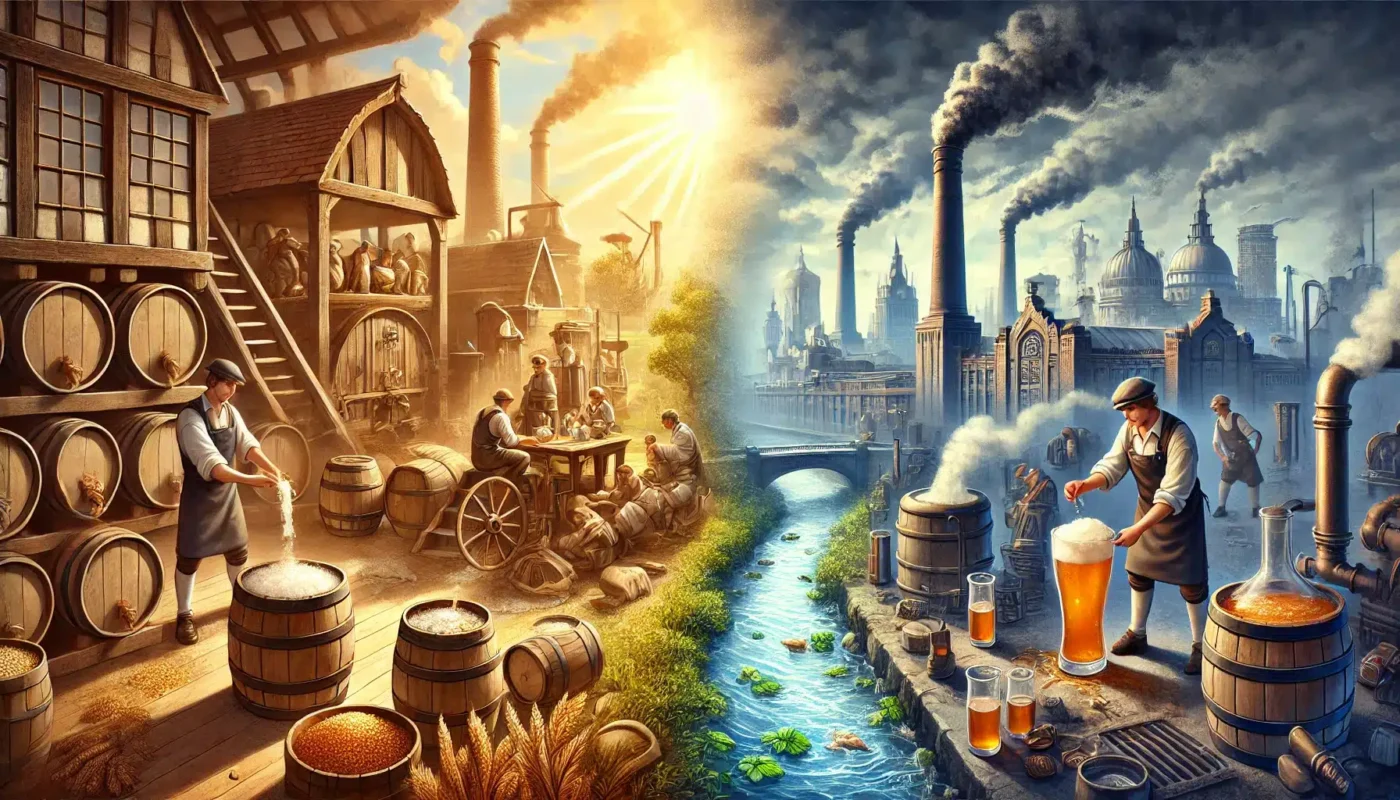Blog
Contaminated and toxic beer: how 18th-century pollution poisoned beer in London
Battle for the cleanliness of brewing in the industrial age
In the lively heart of the 18th century London, a strange alliance was created-between beer and pollution. While but also the porter became staples of urban life, the environmental realities quickly industrializing the city began to shape a way in which, and even if beer can be safely weighing.
What began as a local ship depending on clean water and simple ingredients soon collided with coal smoke, chemical rafting and contaminated rivers. The result was not only a revolution in the production of beer, but one of the earliest public settlements with environmental degradation.
The desire that the city built
Beer was not just a drink – it is everyday maintenance. In 1700, with drinking water often dangerous, beer was consumed by almost everyone, including children. It was safer than non -treated water thanks to the boiling process and alcohol content. In London, beer was a need for public health as a cultural meeting.
Brewery scattered by the city, and many of them are located along the Thames to get easy access to shipping routes. These breweries belonged to the largest water consumers in the city, using over 1.3 million liters a day. At the beginning of the 18th century, Brewing accounted for ten percent of the total water consumption in London.
But the water did not become cleaner.
Heaven from the land of blue waters?
When the industrial revolution gathered in London, London was covered with coal smoke. Radia and opals threw organic waste directly into the Thames and its tributaries. Chemical and early factories have released by -products with a little rethinking of environmental consequences. The same river, which served as a brewery life line, also became its greatest threat.
Many brewers have tried to adapt. Some dug deep wells to completely avoid river water, hoping for access to cleaner underground sources. Others installed early filter systems. But even these measures turned out to be inappropriate. Pollution was no longer just a surface problem – it was used in the aquifer and poisoning the entire catchments.
Beer was threatened as dangerous as the water she replaced.
Pollution in the barrel
At the end of the 18th and early nineteenth century, scientists and reformers began to sound an alarm. German chemist Friedrich accuse Famously warned of “death in a pot”, revealing adultery of food and drinking in Great Britain.
Although his main work took place at the beginning of the 19th century, his research reflected the practices that were already in the game in the previous age. It turned out that beer was often documented with heavy metals, sulfates and other dangerous substances – not only to stretch, but mask the foul taste of brewing with contaminated water.
In some cases, opiates and drugs have been added to ensure the illusion of smoothness or force of action. What was once a natural and nutritious product became a tool of toxins – both from polluted ingredients and crunchy brewers reacting to industrial pressure and consumer demand.
Dirty air … dirty water … clean beer?
But it’s not only water. The air itself has changed around these city breweries. Carbon smoke – sulfur and solid particles – based on everything, including open vat for brewing and drying beans. Inhalation of vapors from chimneys and fermentation tanks was not only unpleasant; It was dangerous. Pob. The environment of the eighteenth-century brewing not only influenced what went into beer-spatified people who did it.
In response, some civic leaders began to press on the earliest reforms of air pollution. London smoke reduction movements, often framed around the improvement of public health, were partially driven by concerns related to food safety and drink. If the air was too dirty to keep the brewing clean, it was too dirty to support life. These early calls for regulation would put the foundations under later environmental policy – but at that time they were seen as radical.
Brewing innovation and adjustment seeds
In the face of pollution and consumer skepticism, the brewers had to introduce innovation or die. Some turned to imported ingredients. Others experimented with closed fermentation vessels to reduce air exposure.
The need to protect water quality led to early public investments in urban infrastructure – breeds, pumps and protected water sources. While these efforts were inconsistent and often underfunded, they represented the beginning of a change in public thinking: maybe clean water was not just a luxury. Maybe people had the right to know what was in the water.
Ironically, it was a beer industry – so dependent on cleanliness, but so prone to pollution – which helped to initiate this new consciousness. Beer became both a victim and a catalyst for environmental awareness. Until the dawn of the 19th century, the idea that pollution influenced public health and economic vitality was no longer extreme.
PINT history
Sullage means sewage.
Today, the revival of craft beer proudly advertises its natural ingredients, clean water and historical methods. But few modern brewers recognize the long shadow of industrial pollution, which almost destroyed their craftsmanship. In the 18th century, the beer was not shaped by hops and malt – it was shaped with smoke, sewage and suspicious additions.
In this sense, every mug of pure beer we like today is a product more than just brewing skills. It is a product of heavy management awareness, born in smoky alleys and dirty rivers of the city, where people once drank beer, because water can kill them-and they almost had to stop drinking beer because of the same threat.
The next time you raise the glass, remember: Beer’s past is darker than the golden shade. And his future, like his water, depends on how well we guard the soil under our feet and air above our heads.

